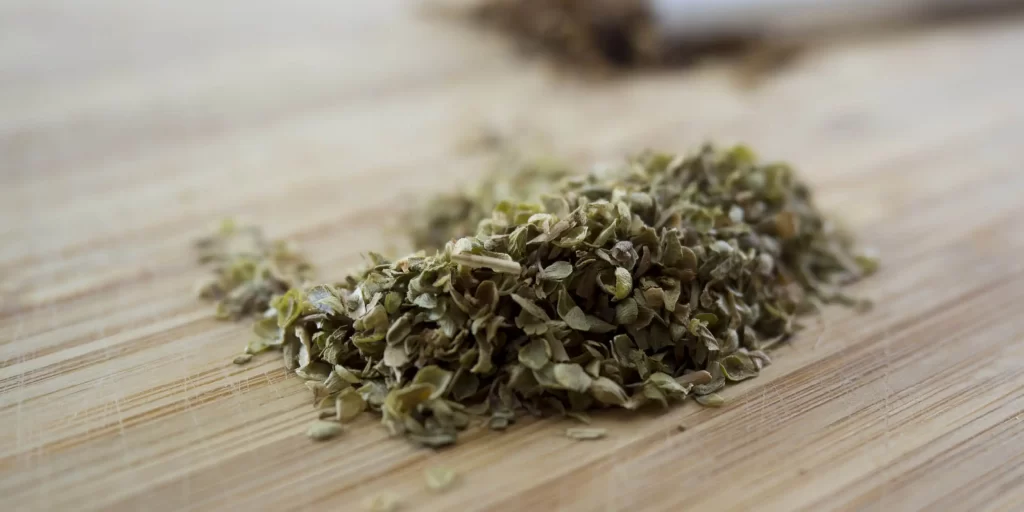How Long Does Spice/K2 Stay in Your System?
Written by Renee Deveney
& Medically Reviewed by Dr. Sarah Dash, PHD
Medically Reviewed
Up to Date
Last Updated - 6/17/2022
View our editorial policy
Spice/K2, sometimes called “fake weed,” is a synthetic drug known as a cannabinoid that acts on the same receptors in the brain as marijuana. It’s often sold as an herbal mixture or liquid incense to be vaporized or smoked by the user.
As a man-made drug, the components of Spice can change regularly. Because of these changes, it’s hard to know how your body will react to the drug or how long spice will stay in your system.
Duration of Effects of K2
K2/Spice is promoted as a ‘safe’ alternative to marijuana and produces similar feelings of relaxation and altered perception. The length of these effects depends on the dose taken and individual characteristics that affect tolerance.
In general, the effects of K2 can be felt within minutes and can last several hours. This includes effects like feeling relaxed or happy, but can also include negative symptoms like a racing heart or feeling paranoid. In rare cases, the effects of K2 can last longer in your system and negative symptoms can persist for days.
Spice Half-Life
Unlike some drugs that pass through the system fairly quickly, Spice can be stored in the body’s fatty tissue. This means that even though the effects of the drug wear off quickly, the drug stays in the body and can be detected for a very long time.
The half-life of spice is thought to be up to 41 days.
Spice/K2 Screening Detection Times
Due to its long half-life, Spice/K2 can be detectable for months after use. As a synthetic drug, Spice can be hard to detect in a drug test because its components can change. Spice is a popular choice for those wishing to avoid detection, as some standard drug tests do not pick up it.
Urine
Routine laboratory tests for detecting Spice/K2 in urine are not common, but there are some tests available. One study showed that components of Spice were detectable in urine for 152 – 505 days.
Blood
Because the makeup of synthetic drugs change over time, it is hard to test for K2/Spice in the blood. Blood tests usually work by having certain molecules bind to a drug to identify it. However, without knowing exactly what K2/Spice is made up of, it is hard to test in blood.
Saliva
Testing for K2/Spice is also not common in saliva, but some labs are now offering testing kits. Synthetic cannabinoids may be detectable in saliva for 24-48 hours, but the results might be inconsistent or unreliable.
Hair
Most tests for synthetic cannabinoids can detect use within the last 90 days. However, it’s possible that K2/Spice is detectable in hair for much longer, up to several months. This can also depend on hair length.
Factors Affecting How Long Spice Stays in Your System
The amount of time that Spice/K2 stays in your system can depend on a number of factors, including:
- Frequency & Amount of Use
- Age & Health
- Method of Use
Even though regular users might develop tolerance to the drug, it’s important to remember that the substances in the drug can change regularly. Taking a new batch of Spice can have a different and serious effect, even in regular users.
False Positives for Spice/K2
There are some synthetic cannabinoids that are FDA-approved for medical use, mainly for reducing nausea or increasing appetite in cancer patients. Taking a synthetic cannabinoid for medical reasons can cause a false positive for Spice/K2 on a drug test.
How Spice is Metabolized in the Body
The metabolism of Spice in the body takes place in two stages. In the first stage, chemical reactions involving the drug take place in the body to produce psychoactive molecules. These molecules are what produce the ‘high’ feeling of taking Spice.
The second stage of spice metabolism involves converting the broken-down Spice into substances that are easy for the body to excrete. This is done through the kidney, and the drug is excreted through urine.
If you or someone you love is misusing or addicted to Spice/K2 or other drugs, contact The Recovery Village Ridgefield to discuss treatment options today.
Sources
National Institute on Drug Abuse. “Synthetic Cannabinoids (K2/Spice).” February 2018. Accessed August 2, 2018.
Spaderna, Max et al. “Spicing things up: synthetic cannabinoids.” Psychopharmacology, August 2014. Accessed August 2, 2018.
Tai, Sherrica., Fantegrossi. William E. “Synthetic Cannabinoids: Pharmacology, Behavioral Effects, and Abuse Potential.” Curr Addict Rep, March 15, 2014. Accessed August 2, 2018.
Kulig, Ken. “Interpretation of Workplace Tests for Cannabinoids.” Journal of Medical Toxicology, March 13, 2017. Accessed August 2, 2018.
Fantegrossi, William E et al. “Distinct pharmacology and metabolism of K2 synthetic cannabinoids compared to Δ(9)-THC: mechanism underlying greater toxicity?.” Life sciences, February 27, 2014. Accessed August 3, 2019.
View Sources
National Institute on Drug Abuse. “Synthetic Cannabinoids (K2/Spice).” February 2018. Accessed August 2, 2018.
Spaderna, Max et al. “Spicing things up: synthetic cannabinoids.” Psychopharmacology, August 2014. Accessed August 2, 2018.
Tai, Sherrica., Fantegrossi. William E. “Synthetic Cannabinoids: Pharmacology, Behavioral Effects, and Abuse Potential.” Curr Addict Rep, March 15, 2014. Accessed August 2, 2018.
Kulig, Ken. “Interpretation of Workplace Tests for Cannabinoids.” Journal of Medical Toxicology, March 13, 2017. Accessed August 2, 2018.
Fantegrossi, William E et al. “Distinct pharmacology and metabolism of K2 synthetic cannabinoids compared to Δ(9)-THC: mechanism underlying greater toxicity?.” Life sciences, February 27, 2014. Accessed August 3, 2019.
Authorship






